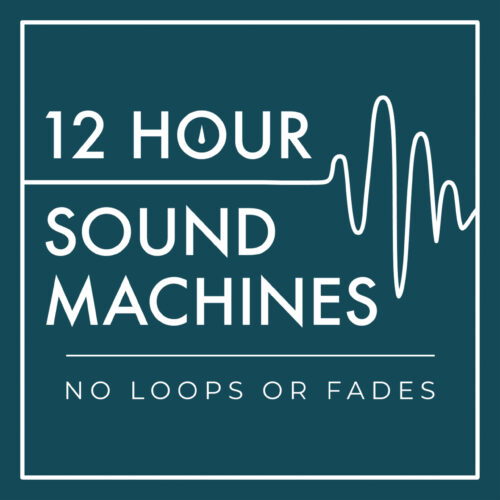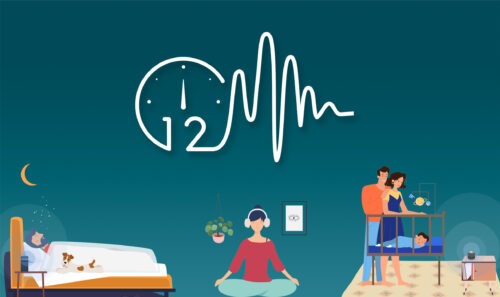
A couple of weeks ago in the Tuesdays With Coleman blog “Brand Growth Inspiration from Lofi Girl,” I mentioned 12 Hour Sound Machines, a podcast created by a father who couldn’t get his son to go to sleep. The podcast, which he simply created for himself to play on the smart speaker in his son’s bedroom (“If there was a private toggle, I would have turned it on”) now gets 300,000 listens a day and is approaching 80 million total downloads.
I spoke with Brandon Reed, the creator of 12 Hour Sound Machines, who shared lessons from his launch for current and aspiring podcasters.

12 Hour Sound Machines creator Brandon Reed
The genesis of 12 Hour Sound Machines was a need based on what was currently available. To help his crying child, he first tried an air filter. It wasn’t loud enough. He looked online and found the sounds he was seeking either weren’t long enough, were multiple tracks put together that faded in and out, or he could hear clicks when they looped.
And so, he made his own 12 hours of brown noise. No fades, no loops, no clicks.
The night he posted it online, he needed a name and was exhausted. So he came up with, as he puts it, “the most straightforward thing imaginable,” 12 Hour Sound Machines. He made a thumbnail in three minutes and turned it on.
In the beginning, Reed says people started finding it organically (about 30 downloads a day) and he wondered why people besides him were listening.
Even though he made it available on all podcast platforms, it was Spotify where the magic happened. Here’s his explanation:
“My offering is pure utility value. People don’t care that it’s a podcast. They don’t treat it like a podcast. They just need white noise to help them sleep. People were already using Spotify to get sounds and noise. So they type in “sound machine”. Because I was first in, I had an algorithm advantage. They see 12 hours in the name, and they click.”

And so, 12 Hour Sound Machines grew and grew, mostly on Spotify, almost entirely organically. It wasn’t until it crossed the 50,000 daily downloads mark that Reed started thinking about it as a business. He was a podcast consumer but didn’t know the industry side. So, he started learning and studying.
At 75,000 downloads per day, he started looking into monetizing. His hosting platform at the time, Anchor, released a subscription model. He kept a free level of sounds but added 25 additional sounds for 2.99/month to see if people would pay.
They did.
Last Summer, Brandon Reed turned ads on for the first time, recognizing it had to be pre-roll (it wouldn’t be on brand to interrupt a 12-hour sound machine with a commercial). Despite some initial angry responses from a few listeners, it hasn’t stopped the growth.
He hasn’t left his day job working on apps for Disney, but he’s sure got one impressive side hustle. What he’s learned provides a valuable road map for anyone looking to create and monetize a successful podcast. Here are three takeaways:
- Find an unoccupied lane and fill it. Blue Ocean Strategy (finding unoccupied market space in the clear “blue ocean” rather than competing in the shark-infested “red ocean”) worked in this case, even if it was by accident. Reed identified a need and served it. Everyone needs a good night’s sleep.
- KISS (Keep It Simple, Stupid). He says coming up with the name of the podcast quickly was the result of exhaustion, but “the most straightforward thing imaginable” is usually the right thing. Find out what consumers are searching for (i.e., sound machines) on what platforms (i.e., Spotify) and name it the way they would search for it and describe it.
- Don’t try to do it alone. Reed recognized early on that his podcast couldn’t scale and be successful without help. That meant bringing on a support team that included a website developer and audio engineer so he could focus on business development.
I’ll leave you with his perspective on a mistake he often notices people and companies make.
“What so many people do, with any idea or product they’re trying to build, they think, if I build it, they’ll come. If I just build the coolest widget, the most awesome service, the most unique and innovative product. Then they give it to the world, and it doesn’t catch on. So, they say, “nobody wants it.”
It’s not that nobody wants it. It’s that nobody knows about it, or the wrong people know about it.
What this showed me is that if product market fit is right, if you just give people what they need, then they will come. And they will buy.”

